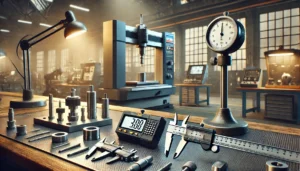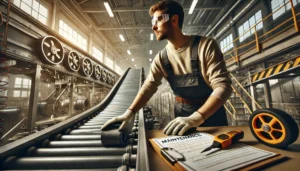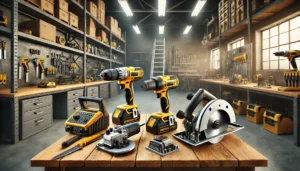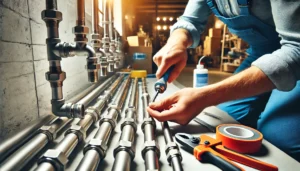Construction, manufacturing, and different engineering disciplines need anchors and fasteners which serve as the fundamental links between different parts of a structure or machine. The assemblies of such components are crucial, and the safety of those components strongly relies on proper selection and installation of these elements. To guarantee useful life performance, safety, and durability, best practices must be followed at the time of installation.
1. Selection of Appropriate Anchors and Fasteners
The first step to secure installation is choosing adequate type and size of anchors and fasteners that fit the specific application. The base materials may include concrete, steel, or wood; they are also subject to certain load and environmental conditions such as moisture or chemicals as well as future assembly dismantling. The expectations placed on the structural performance dictate that the anchors and fasteners selected be compatible with the base material.
2. Preparation of the Installation Site
Prior to mounting, the site where the anchor or fastening element is to be placed should be properly cleaned. Any trash, dirt, oil or contaminants that would affect the bond or seating of the anchor must be eliminated. For concrete surfaces, check to make sure that the holes are free from dust and moisture because they will very much undermine the effectiveness of the holding capacity of the anchor. A vacuum cleaner or a jet of compressed air should work well for cleaning the holes.
3. Drilling the Installation Holes
The process of cutting the holes is one of the most crucial steps of the entire work. The anchors should be easily installed in the drilled holes. The correct size and shape of the drill bits used should match the base material of the workpiece. In case of cutting holes in concrete, a hammer drill with a masonry carbide-tipped bit is the most suitable. Bore the holes to the indicated depth and diameter, maintaining a clean space during the operation. Keep in mind that the anchor is designed with a certain weakening factor so make sure not to cut deeper than needed.
4. Insertion of Anchors
After drilling, insert the anchor into the hole and make sure it is oriented and positioned at the appropriate angle in relation to the expected load. For mechanical anchors, like wedge anchors, make sure the expansion device is set correctly. For chemical anchors, fill the hole with adhesive before inserting the anchor rod and follow the manufacturer’s guideline concerning the volume of adhesive to be used or the depth of insertion to achieve.
5. Tightening and Securing Fasteners
After setting the anchor, fix the suitable fastener like a bolt or screw and tighten it to the predetermined torque value. Making use of a calibrated torque wrench will ensure that the fastener has been appropriately tightened to prevent loosening and under tightening. Over tightening can deform the material so care must be taken. Ensure to look at the manufacturer’s instructions for guidance on torque settings.
6. Post Installation Inspection
A careful check should be done at the post completion stage of the work, to confirm every part and bolt is situated and positioned in the right place plus some other components to check for any deformities in the bolt positions. Make sure there are no signs of misalignment, corrosion, or damage. Confirm that all the installation components are as per the design expectation, and also check the anchors for loading capacity. To maintain strength through the life of the structure, regular checks during the service life are also suggested.
7. Safety Considerations
As always, ensure you follow all safety rules while performing the installation. Ensure that you have the necessary personal protective equipment (PPE) such as safety spectacles, gloves, ear defenders, and dust masks to shield from particles and dust. Check that all tools and equipment are in proper working order and that they are used according to the manufacturer’s guidelines. There is a need to enforce safety rules to avoid incidents, for instance, by securing the worksite and employing a fall protection system when working at elevated levels.
8. Environmental Considerations
It is important to remember external conditions which may influence how well the anchor and the fastener perform. Protective coatings or details which are resistant to corrosion should be used in corrosive environments to prevent degradation. In areas with seismic activity, make certain that the anchor and fasteners selected will handle dynamic loads and vibrations. Compliance with the local building codes and regulations is very important for compliance safety issues.
9. Training and Documentation
All personnel who will be performing the work and all those who will participate in the installation have to be trained for them to understand the particulars of the project. Ensure that records of the installation process are maintained properly, specifically the types and quantities of anchors and fasteners installed, installation processes carried out, and any variation from the standard procedures documented. Maintenance, inspection, and audit activity records for the building have greater value if proper documentation systems are employed.
10. Manufacturer’s Instructions and Standards Compliance
Make sure to follow the manufacturer’s guidelines on installation or any other relevant instructions. There is a need for compliance with established industry benchmarks as well as local codes of construction for safety and durability of the installation. Make it a habit to check from time to time the new standards and other accepted practices in your area.
These anchor and fastener installation best practices is the hallmark of proper installation that supports your projects and ensures sufficient strength and meant stability. It maximizes not just the efficacy and safety of the structure but the service of the rest of its constituents as well.










